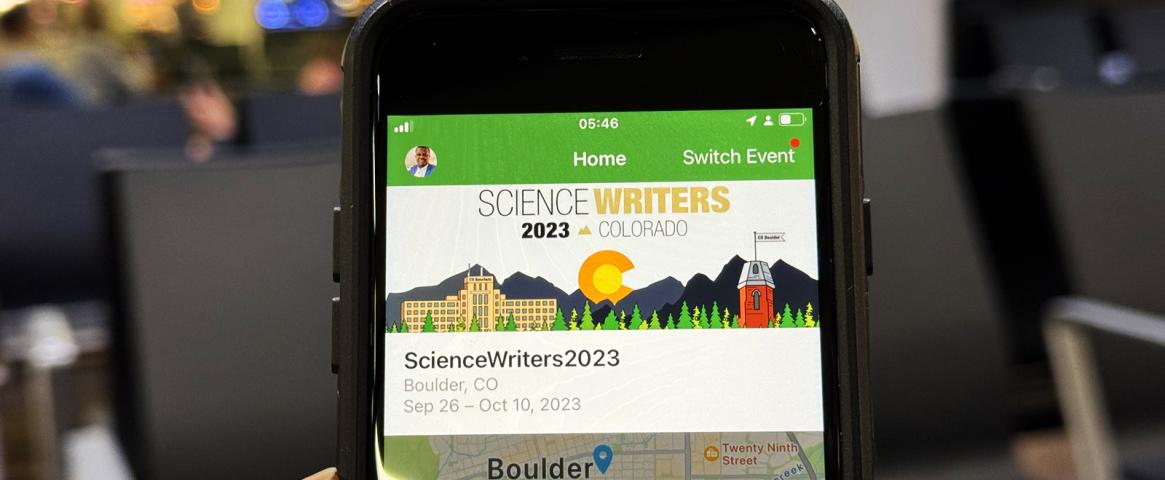Story by Celia Ford
Photography by Paul Adepoju
At the ScienceWriters2023 national meeting, a panel of editors shared their strategies to empower editors to improve diversity, equity, inclusion, and justice (DEIJ) within their organizations. The virtual workshop “How Editors Can Advance Diversity, Inclusion, Equity, Accessibility, and Justice” (#DEIJEditing) was organized by Shraddha Chakradhar, deputy news editor of diversity for Science magazine, and Laura Helmuth, editor-in-chief of Scientific American.
Editors wield the power to choose what stories are told — and with this power comes the responsibility to ensure your publication represents diverse groups. Science, for example, instituted a policy where stories featuring at least four voices cannot be published with homogenous sourcing (e.g., all male, or all white). Stories about a specific community also shouldn’t be told without representation from that community, Chakradhar said. Finding diverse sources requires “a partnership between the reporter and the editor,” she adds — reporters should take care to highlight a range of voices and expertise, and editors should be prepared to call homogenous sourcing to attention.
Building a list of diverse sources happens gradually over time, not under a tight deadline, said panelist Pakinam Amer, a Cairo-based multimedia journalist. Both editors and reporters can maintain lists of sources — especially those based outside the U.S. or covering underreported topics–to keep in their back pocket. “It requires sustained, dedicated, intentional work,” Chakradhar said. “Don’t wait until it becomes urgent.” Amer suggests that editors encourage reporters to share sources to minimize last-minute scrambling.
And, she cautions, “make sure they’re included based on merit, not tokenism.” As an integrity check, reporters can ask themselves if they would have sought out their source’s expertise if they didn’t hold a marginalized identity. “If yes,” Amer said, “it’s not tokenism.” Panelists point towards The Open Notebook as a treasure trove of resources for journalists looking to learn more.
In the audio world, embracing accents can both make non-native English speakers feel more comfortable, and “add richness to your story and sound,” Amer said. Sending sources questions in advance and reassuring them that mistakes are OK can help sources shine in podcasts.
Many newsrooms rely on the AP Stylebook as the gold standard for language choices, but it hasn’t been updated in over three years. Sometimes, deviating from AP style can boost inclusivity and clarity, said Ellen Kuwana, a Seattle-based freelance writer and editor. “Language is a human endeavor based on culture, and culture is always changing,” she said. Making language choices that align with newer cultural norms (like capitalizing “Black”), can help your content shine. “We don’t want people to snag their eye on a certain term that has meaning you didn’t intend,” Kuwana said. Resources like the American Psychological Association’s Inclusive Language Guidelines and the Conscious Style Guide can help editors track updated culturally-sensitive language norms.
But changing language alone isn’t enough. “Words can wound, but it’s a little too easy to stop there,” said Siri Carpenter, co-founder and editor-in-chief of The Open Notebook. She adds that style guides can serve as an “on-ramp to thinking about larger issues,” like what topics an outlet covers in the first place, who they source, and what art they choose to display.
When commissioning graphics, Kuwana said, “Don’t assume that your graphic designer is thinking with equity and inclusion in mind — you have to bring that lens yourself.” When selecting images to capture an audience’s attention, choose graphics that are as precise and accurate as your text ought to be — which includes accurately reflecting identities represented in your story. Helmuth suggests communicating this directly with your graphics team. “If you tell your designers that you don’t want ‘science’ represented by a white man in a lab coat, they’ll appreciate it and listen.”
Pay equity is also extremely important. Freelancing is challenging, and Helmuth encourages editors to review their practices regularly so the burden of asking for rate increases is not solely on the freelancer. “Editors should be as generous as they possibly can be,” Carpenter agrees, and encourages editors to consider costs like wire transfers and kill fees when writing up freelance contracts.
And as an editor in the newsroom, Helmuth said, “Let everybody know that no one is expected to be perfect. We want to help each other be better.”
Celia Ford (@cogcelia) recently graduated with her PhD in neuroscience from the University of California, Berkeley. She was a 2022 early-career science writing fellow at The Open Notebook and a 2023 fellow at WIRED via the AAAS Mass Media Fellowship program. Celia is currently a freelance science journalist in the San Francisco Bay Area.
Paul Adepoju (@pauladepoju) is a freelance journalist and editor, author, and media trainer based in England, with bylines in health and medical stories for Nature, Scientific American, Devex, Insider, The Lancet, Health Policy Watch, New Scientist, and other publications.
This ScienceWriters2023 conference coverage article was produced as part of the NASW Conference Support Grant awarded to Ford and Adepoju to attend the ScienceWriters2023 national conference. Find more 2023 conference coverage at www.nasw.org
A co-production of the National Association of Science Writers (NASW), the Council for the Advancement of Science Writing (CASW), University of Colorado Boulder, and the University of Colorado Anschutz Medical Campus, the ScienceWriters2023 national conference featured an online portion Sept. 26-Oct. 3, followed by an in-person portion held in Boulder and Anschutz, Colo., Oct. 6-10. Learn more at www.sciencewriters2023.org and follow the conversation on social media at #SciWri23
Credits: Reporting by Celia Ford; edited by Ben Young Landis. Photography by Paul Adepoju; edited by Ben Young Landis.

